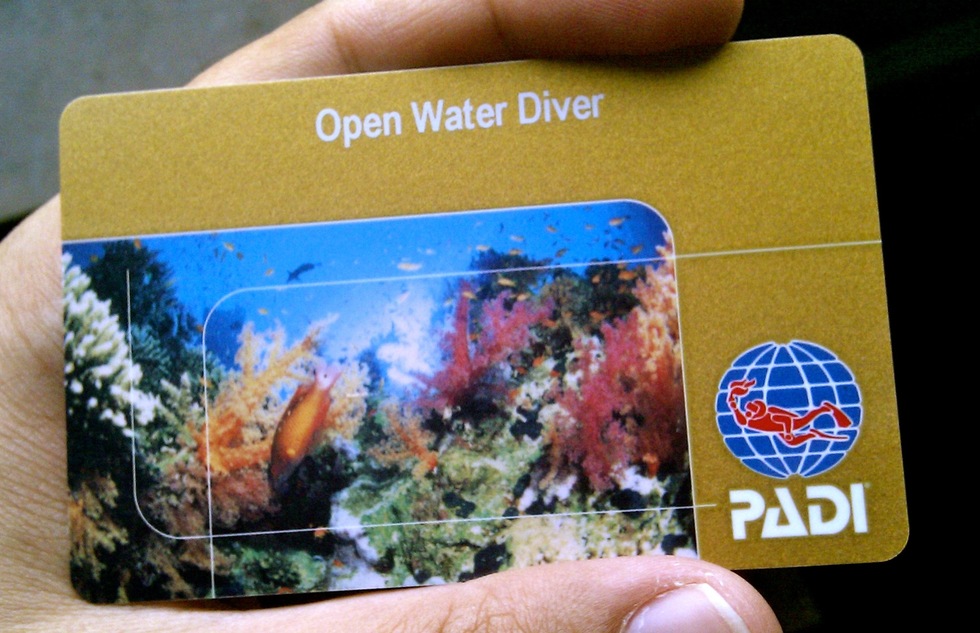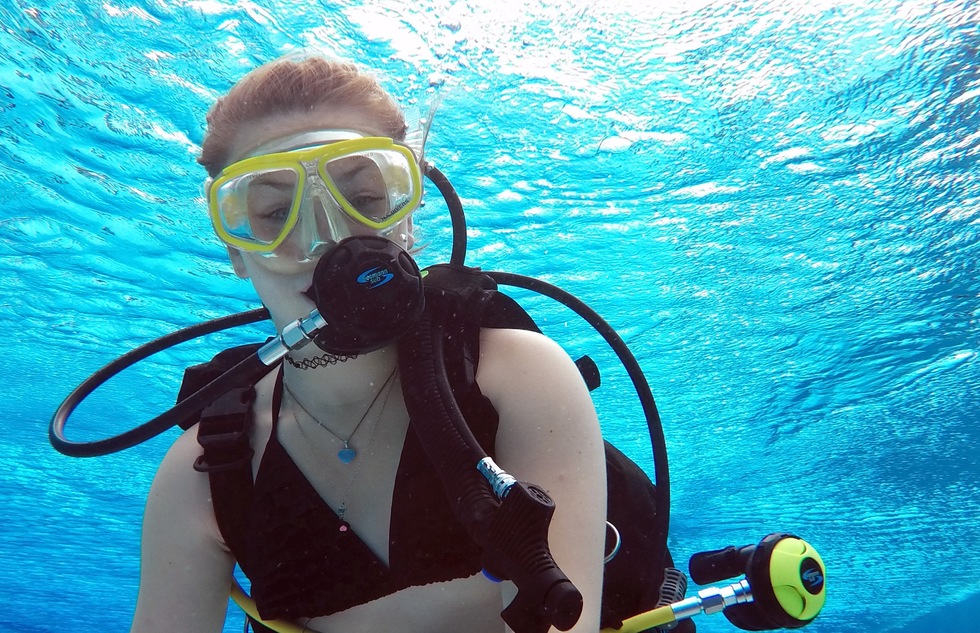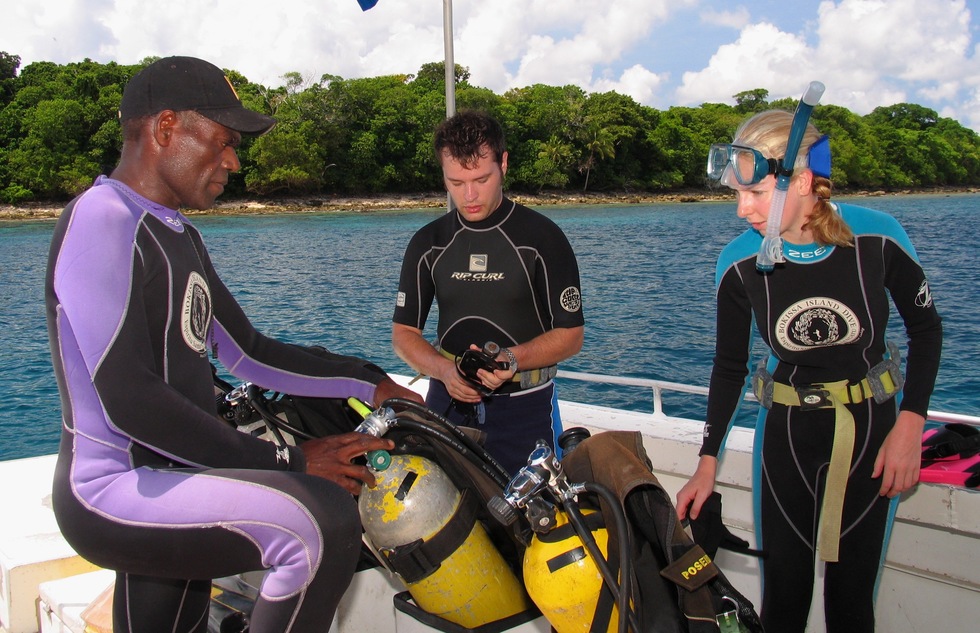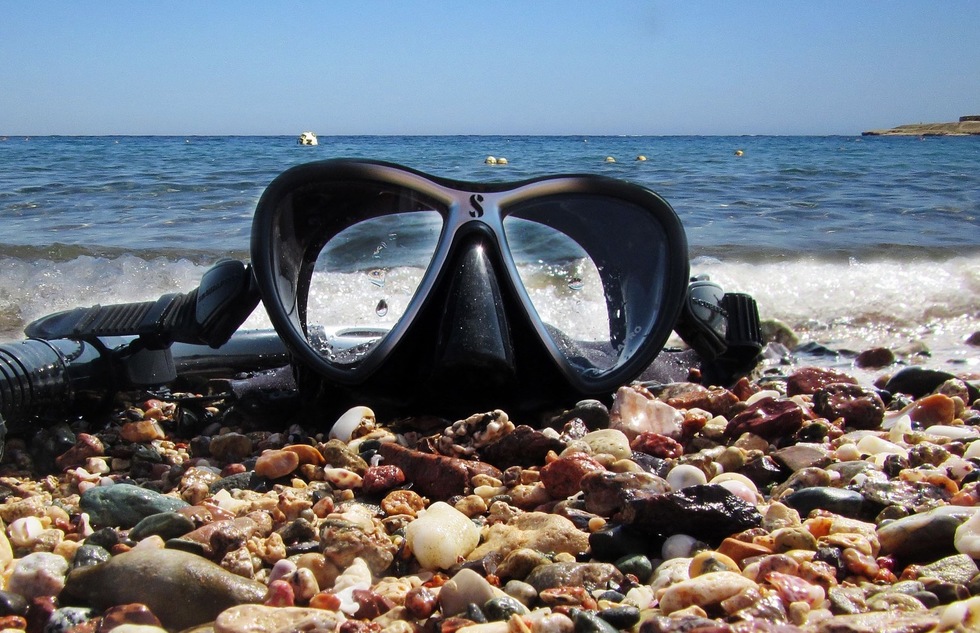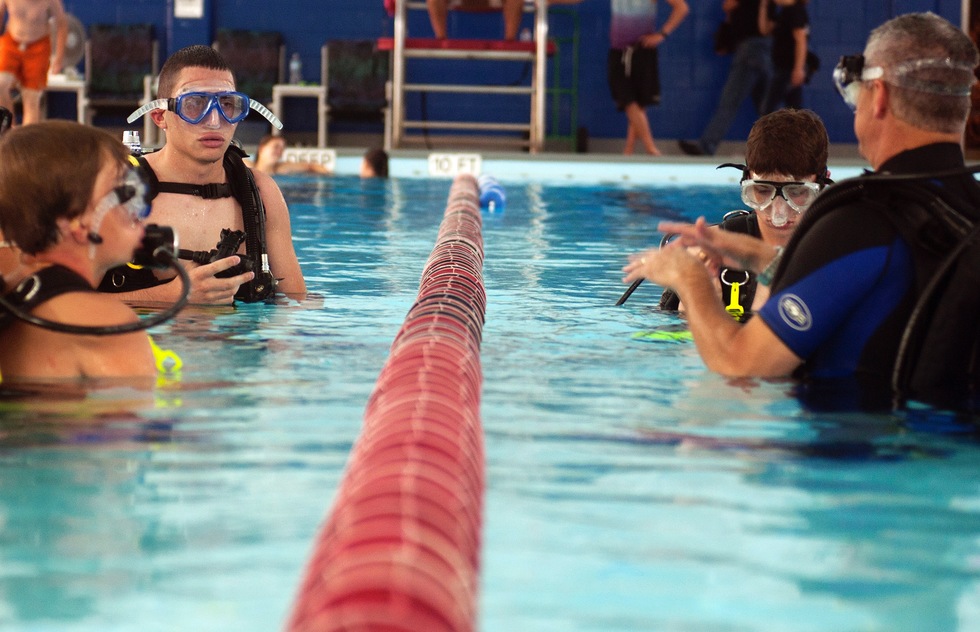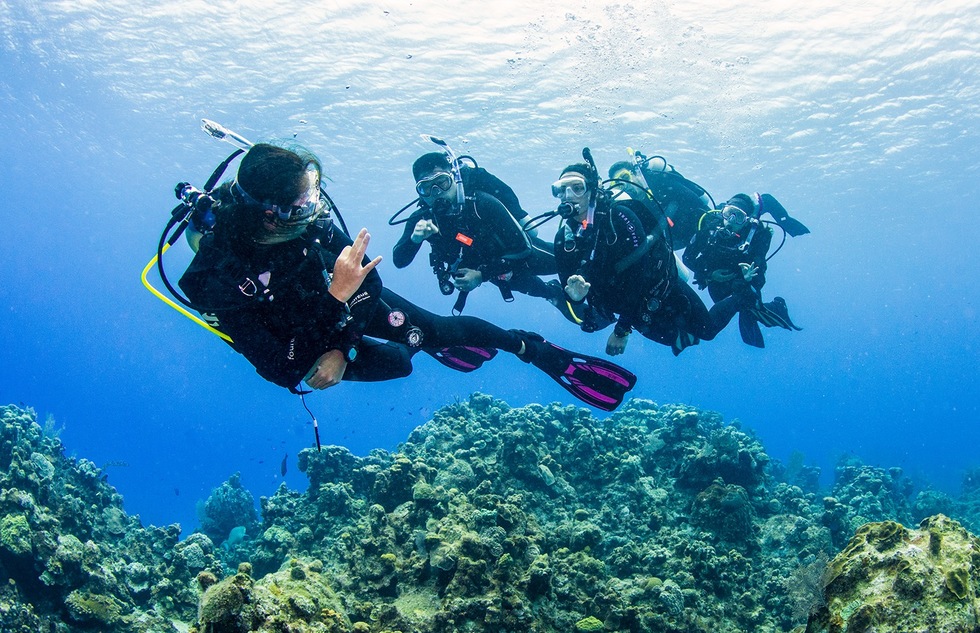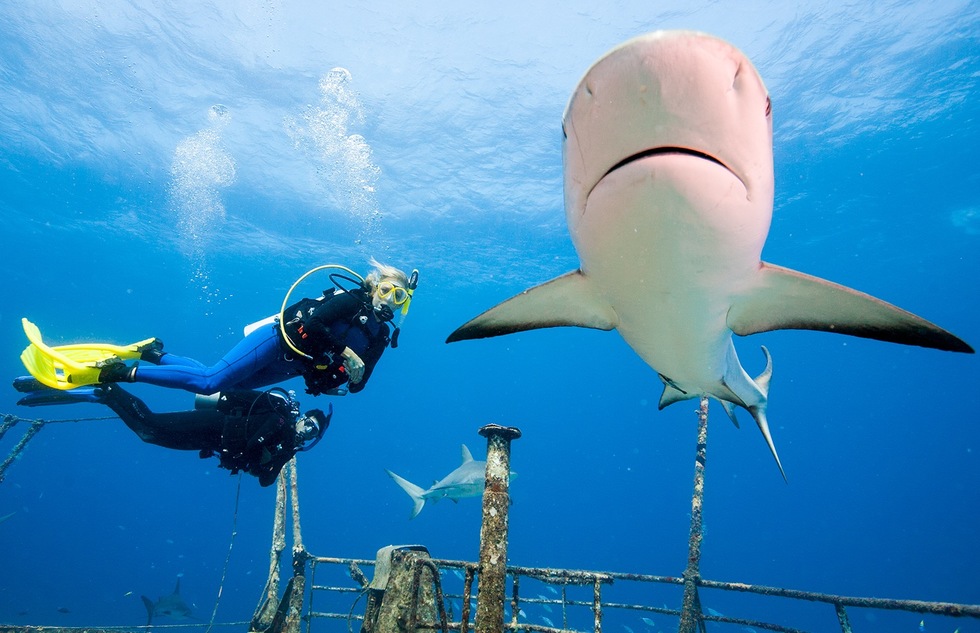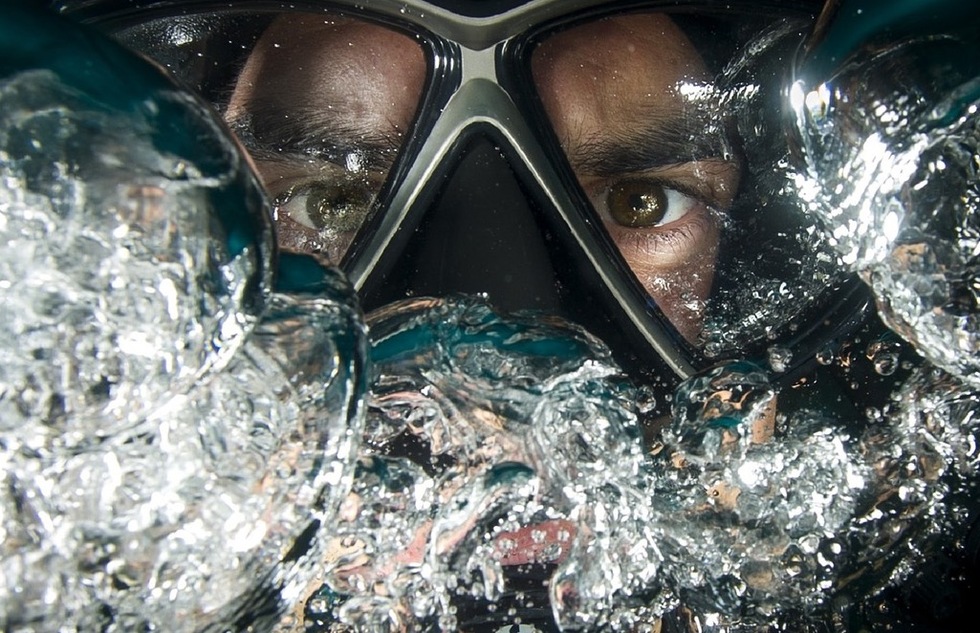Scuba Diving Certification: Should You Take the Plunge on Vacation?
By Zac ThompsonLike seatbelts and slaughterhouse inspections, scuba diving certification arose as a way of regulating an industry that had previously operated with unacknowledged risks. “Back in the ‘50s and ‘60s, scuba looked so deceptively simple,” says Karl Shreeves, an education and content development executive for the California-based scuba training organization PADI Worldwide. “Some people just put the stuff on with no training and they’d go jump in the water.”
Nowadays, however, there are internationally accepted training standards. And “anywhere you go, if you’re not certified,” according to Shreeves, “[dive centers] aren’t going to rent you gear and they’re not going to take you out on a boat.” But what does training and certification for underwater diving entail? And can you do it all on a beach vacation? Or do you need to be certified before you leave home? We got some answers for newbies considering taking the plunge.
Pictured: a 1917 photo of a U.S. military diver
By far the biggest and best-known scuba training organization is PADI, or the Professional Association of Diving Instructors. But it’s not your only option—nor the only agency fond of alphabetical abbreviations. There’s also SSI (Scuba Schools International), NAUI (National Association of Underwater Instructors), and several other certifiers both in the U.S. and abroad. Training in each program may vary slightly, but you’ll want to make sure that whatever certifying agency the dive center you choose is affiliated with adheres to the minimum standards (PDF) set by the World Recreational Scuba Training Council (WRSTC). PADI, NAUI, and SSI all fit that bill. And because these are international standards, that means that if you’re certified in, say, Florida, you can go underwater diving in, say, Australia without additional training.
If you don't live near an ocean but have visions of communing with underwater creatures on your travels, it's likely you can get started on your scuba training in your town and then finish the process with the help of a seaside dive center or resort when you're on vacation. Simply use the dive shop locators from PADI, SSI, or NAUI. Even landlocked Denver has, by our count, at least seven different PADI centers, although the Pacific Ocean is more than a thousand miles away.
Pictured: an open-water diving certification card from PADI
According to the WRSTC, solo divers have to be at least 15 years old. There is no upper age limit. “There are people 90-plus years old and people with physical disabilities who dive,” says Shreeves of PADI Worldwide. Potential participants do have to fill out a medical screening form and may be asked to get clearance from a doctor if there are heightened risks. Disqualifying conditions include severe lung disease and disorders that cause sudden loss of consciousness.
“You certainly don’t need to be an athlete,” Shreeves assures us. But “diving is potentially strenuous, so if you’re at cardiovascular risk, you have to set reasonable limits based on your physiology. Obviously what a 90-year-old scuba diver does is likely to be more limited than what a 30-year-old does.”
There are basically three levels to any scuba certification program: a round of coursework that culminates in a written exam; five “confined-water” classes, nearly always held in a pool; and four open-water dives performed on a lake or in an ocean. “Hear it, practice it, do it,” is how Shreeves sums up PADI’s instruction. You can fulfill the first step in person by registering with a local dive shop or online by purchasing an eLearning course from PADI or another certification agency. When you’re ready to move onto the pool, you’ll need to schedule confined-water classes via a dive center (as we mentioned, you can find a PADI, SSI, or NAUI shop through those organizations' websites). Undertake the four open-water dives through the same dive shop or, if you don’t live near an ocean, get a referral and add some underwater test stress to your next seaside vacation. How fast you zip through these requirements depends a lot on when you book and complete the separate components, which we’ll describe in more detail in a minute.
It can, but keep in mind that the first two steps of the training process involve coursework and several hours of pool classes that will eat into precious vacation time. Many all-inclusive resorts throw in an introductory scuba class that teaches uncertified divers some of the basics in a pool or protected lagoon. But you won't be hitting the ocean afterwards—consider it a diving amuse-bouche. If the resort has a licensed diving center or partners with one (you can confirm credentials through the website of a certifying agency like PADI), you can register for additional training right there.
It's a better idea, though, to complete the online or classroom coursework as well as the pool classes before your trip via a dive center near where you live. (PADI-licensed shops are the easiest to find—there are thousands of them across more than 150 countries.) Then, when you're ready for your first open-water dives and you've scheduled a trip to some seaside locale, let your dive instructor know where you're going, and you'll get a referral for a licensed scuba center in that destination, possibly even on the grounds of your resort. You have to complete four open-water dives to get your certification card, and the dives have to be spread out across at least two days. You don't have to do all four on the same trip.
Now let's take a look at what you'll learn in training.
“There’s a lot of mental activity involved with being a diver,” Shreeves points out. Before you even get in the water, the online or classroom work begins stuffing your brain with a locker room’s worth of equipment—face masks, fins, tanks, valves, a dive computer (to monitor how long and how deep you’ve been under to keep the bends at bay), and more—as well as important rules such as never, but NEVER hold your breath when you’re scuba diving unless you want your lungs to explode from the water pressure. You’ll learn many additional safety precautions and what to do in emergencies. “Those are strategies,” says Shreeves, “and then when you get to the pool, you’ve already learned what they’re about and you’ll apply them with your instructor and then apply them again in open water.” In other words, you need a solid knowledge base even when you’re entering a medium that’s entirely liquid.
Typically lasting 2–3 hours apiece, the five confined-water classes give beginners hands-on experience in a controlled environment. You’ll acquaint yourself with the full pre- and post-dive equipment rigmarole: how to set everything up, make sure it’s working properly, take it apart, and take care of it. Once geared up, you’ll get in the pool and learn basic skills such as how to control your buoyancy, floating or sinking at will. Again, acquiring safety competence is paramount. “Everybody asks, ‘What happens if I don’t have air?’” says Shreeves. “You’ll practice how to not let that happen. But just in case it should anyway, you’ll practice how to share air with a buddy.” There are lessons on blowing water out of your face mask and relieving painful pressure in your ears, too. Though five classes usually do the trick, Shreeves says that a good instructor will keep working with you until you’re ready to move to the next step. “It doesn’t matter if it takes you five minutes or five hours. When you know how to do it, you know how to do it, and that’s what’s important.”
The last step in scuba certification is successfully completing four ocean or lake dives to the satisfaction of a licensed instructor. You’ll need to demonstrate everything you learned in the pool, but this time depths will reach between 15 and 60 feet (5–18m). Among the items on instructors' checklists: the assembly and proper use of equipment, controlled descents and ascents, safety measures, underwater swimming, and so on. Do everything correctly—and do it four times spread out over at least two days—and congrats! You are a card-carrying certified scuba diver. Though your certification will never expire, you can update your skills later with a refresher course if large spans of time elapse between dives. Or you can advance to trickier activities by taking classes in exploring caves, snapping photos under the sea, and using enriched air to stay submerged for extended periods.
Costs vary widely, depending on location and the business interests of dive shops, which set their own prices for classes independent of the certifying agencies. Factor in travel to the ocean—especially if you live far inland—and that adds a whole other level of expense. All told, expect an impact on your bank balance similar to that of golf, skiing, and other vacation pursuits that require gear and lessons.
Shreeves of PADI has this helpful tip for finding affordable dive training: “When comparing prices, be sure to compare apples to apples. What’s included with the program in one place may be different from what’s included with another. One may have add-on costs.” Before registering for training, check to see whether the course price covers online instruction, equipment rentals, pool time, and open-water dives—or whether you’ll have to shell out extra for one or more of those things.
We’ll let Shreeves, who credits Sea Hunt reruns as his inspiration for taking up scuba in 1970, make the final pitch for spending the time, effort, and money required to learn to dive. “Scuba is, at least in my mind, very freeing," he says. "You go down to the bottom of the pool and instead of having to go back up, you go, ‘I could just stay here.’ Your first breath underwater, I promise you’ll never forget it. You almost don't want to take it. Your body’s trying to tell you you can’t do it. And then you take two or three breaths and you just take off. It’s magical.”






